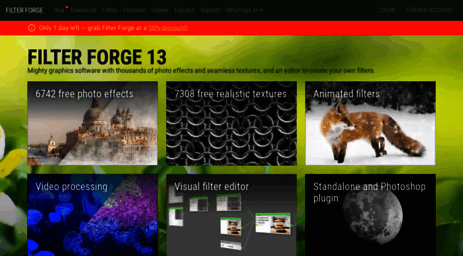

For example, if you wanted to adjust the brightness and contrast for an image, you might do it in a Filter Forge filter following a series of predetermined but still adjustable steps.Įye Candy is the least expensive of the three ($129) and is probably the easiest to use. Think of the effects as saving an action (a macro) in Photoshop. About half of Filter Forge filters are textures and the rest are effects. You can also edit the filters themselves to create new ones or you can create your own filters from scratch. Filter Forge has more than 11,500 filters (call them presets) that do a lot of the same as Eye Candy and can also be modified an infinite number of ways. Eye Candy has about 1,000 presets like chrome or fire or lightning that can be modified to change the look. All three programs can generate pretty much an infinite number of variations creatively based on each program's available resources.

Genetica is strictly a standalone program. Filter Forge is both a plugin for Photoshop and a standalone program. so if you don't have Photoshop, don't invest in Eye Candy. Eye Candy itself is strictly a plugin for Photoshop. Open or import it and add whatever else is in the design and you're ready to print. Using an image created in Eye Candy is no different than how you would use any image in SignLab. I'm not a user of SignLab, so I can't give you step by step ways to use the images created by these three applications. I'm sure SignLab has something that will do the same thing and perhaps a SignLab user can chime in with how best to go about it. You can then double click the fill in the palette to open a control that allows you to scale the pattern larger or smaller within the text to suit the job. You might then type out a line of text and click on the tile in the palette to fill the text with fire or woodgrain or engine turn gold. So for example, in Flexi one defines a texture and it adds it to a palette just like the various vinyl or fill palettes. That is you open the tile in your application and then perform a "define pattern" command which adds the tile into a palette and each program then provides a way to then use the tile to fill a background or a vector or even just a selection. To use a seamless texture tile in SignLab is probably very similar to how you would use it in Flexi, Illustrator or Photoshop. This makes it repeatable for creating larger images without resizing the image. If you're not familiar with a seamless tile, understand that it matches up to its own opposite sides. Your ability to modify them would be very limited.įilter Forge and Genetica are both very adept at creating seamless texture tiles.
#Filter forge 10 free
The free pack files are resources and not the program itself. As I recall, it was simply a package of seamless texture tiles that any one could use. I know that a free pack was offered by Filter Forge at one point but I do not see it on their website at this time. All of these applications, however, will generate images and/or seamless textures that can be used in SignLab. None of these applications will work, to the best of my knowledge, as a plugin for SignLab. But first, let me address a couple of your questions: The following comments will attempt to explain the differences between Eye Candy, Filter Forge and Genetica. I've used both Eye Candy and Filter Forge extensively, tested out and rejected a number of others, and do most of this kind of work with a third product I prefer.


 0 kommentar(er)
0 kommentar(er)
